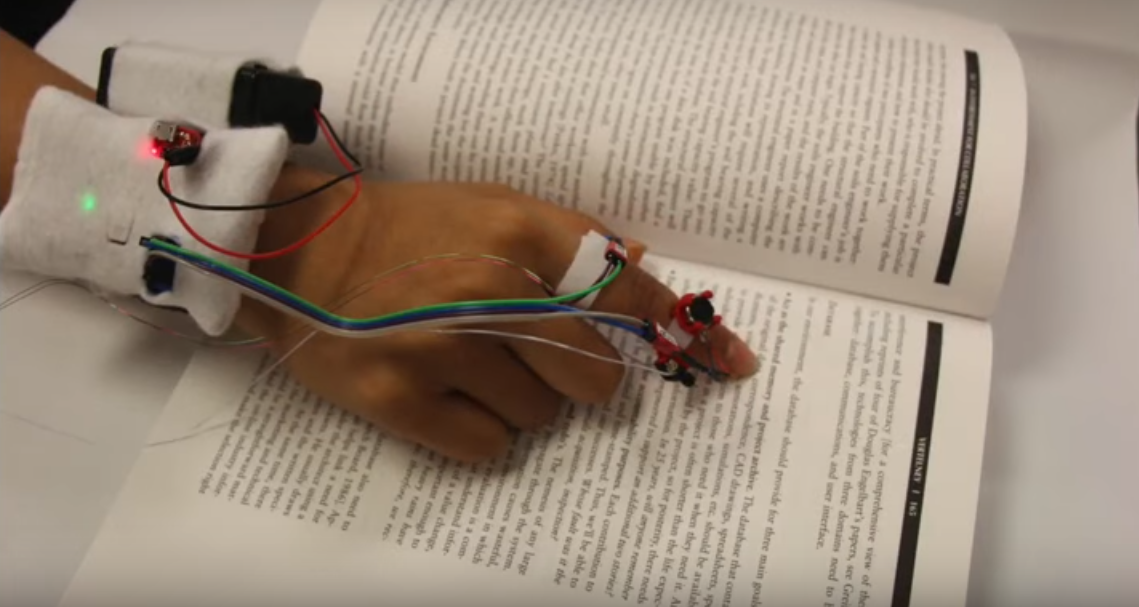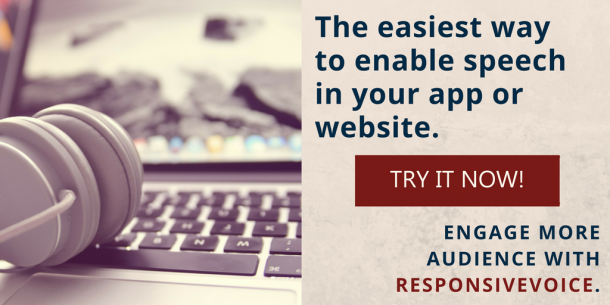What is interesting about Text-to-speech is not only the excitement brought on by the developments on how speech is synthesized, but also, the way it is integrated with tools and applications that will help make people’s lives a whole lot easier.
In an instance, there is a device being developed that can help the blind to read from textbooks and any printed material without Braille. This device, fittingly called HandSight, works by attaching a small camera (just one millimetre across) on the fingertip while another device reads the text out loud.
It was originally prototyped at University of Maryland to help the blind and visually impaired navigate their surroundings. It was part of the final project requirement in the CS graduate course “Tangible Interactive Computing” from 4 years ago at the University taught by Professor Jon Froehlich. HandSight was used as a wearable glove that can sense lightness or darkness of a surface, including tactile feedback from a vibration motor for each individual finger. It can also detect objects and obstructions from a distance.
Fast Forward to the Present
Professor Jon Froehlich and his colleagues further developed the device and equipped it with a camera originally developed for endoscopies. The camera provides information about non-tactile surfaces to the visually impaired.
As we increasingly rely on computers and mobile devices to support everyday tasks such as bill paying, internet browsing, and social communication, both new opportunities and new challenges emerge for those with physical and/or cognitive disabilities. My interest in computer accessibility goes beyond simply investigating how computers can be universally usable (e.g., touchscreen accessibility) but also in how computers can be used to make the world more accessible as well (e.g., studying sidewalk accessibility). – – Professor Jon Froehlich
In a study presented in October last year, 19 blind participants spent hours exploring passages from a textbook and magazine-style page. The results were remarkable. They were able to read between 63 and 81 words per minute on average. In contrast, for braille users, reading can be around 90 to 115 words per minute on average.
HandSight provides the user ability to access any printed materials. With improvements and addition of text-to-speech making the device fully audio assisted, the user can have the best reading performance.
In the future, the developers of HandSight would like to employ a smartwatch-like technology enabling its users to recognize other visual characteristics (i.e. colors and patterns).
As we increasingly rely on computers and mobile devices to support everyday tasks such as bill paying, internet browsing, and social communication, both new opportunities and new challenges emerge for those with physical and/or cognitive disabilities. My interest in computer accessibility goes beyond simply investigating how computers can be universally usable (e.g., touchscreen accessibility) but also in how computers can be used to make the world more accessible as well (e.g., studying sidewalk accessibility). — Professor Jon Froehlich
Reach more audience! Add voice features to websites and apps across all smartphone, tablet and desktop devices. Try ResponsiveVoice — your effortless text-to-speech solution.



